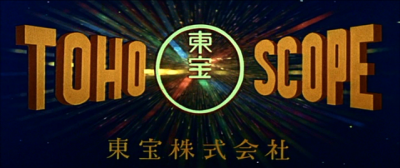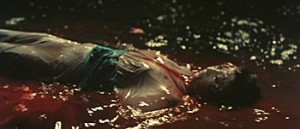EPISODE THREE: A DREAM OF SLEAZE NOT TO BE or CRITERION’S ABORTED ECLIPSE LINE AND THE SION TOHO SET

Sion Toho (meaning Second Toho) was a B-movie studio that took Toho’s name and just stuck “second” in front of it. They specialized in what were called “Summer Movies;” light and fluffy romances, comedies, and teen films that were used to fill theatre seats during the slow months. However, with directors like Nobuo Nakagawa and Teruo Ishii, you’re not going to get “normal” cinema and while Sion Toho did ok, they eventually died out because the major studios started doing the same types of movies, but with bigger budgets (kind of like what happened to the independent movie studios over here).
In 2005, Criterion announced The Eclipse Line which was going to be their foray into B-movie and cult material. The centerpiece of this line was supposed to be “The Alejandro Jodorowsky Collection” with all four of his major films receiving the “special edition” treatment. The fact that they couldn’t get the rights to Santa Sangre, coupled with the fact that they had already lost a ton of money gambling on a box set of rare, cult samurai movies, derailed all of their plans and they opted instead for a kind of shovelware line where they simply took three films from some of the bigger directors that they had on backlog and shit them out.
A lot of the planned titles for the line did hit DVD like Two-Lane Blacktop, Sweet Movie, Vengeance is Mine, and Jigoku. Many others, however, were released only on cable and with the Janus Films imprint (Janus is Criterion’s theatrical branch, so when you see Janus, read Criterion).
And now on to the movies with special thanks to Craig McNeely without whom this article (five years worth of conversations in the making) wouldn’t be as solid. He is the Asian film Yin to my Grindhouse Yang and anything I need to know about Asian film, I get from him. Thanks Craig.
GOKE, BODY SNATCHER FROM HELL (1968)
Craig: Goke is a masterpiece of Japanese filmmaking that only real fans of Asian Cult Cinema have seen. This film is known of by casual fans, but seldom seen. It’s a classic and yet another flick that Tarantino mined for Kill Bill. Instead of giving this masterpiece the release it deserves, however, Criterion is content to re-release Kurosawa films and give us a Gojira transfer that we don’t really need. Sad.
Steven: From its opening shot of birds dive bombing airplane windows to the orange skies which Tarantino aped in Kill Bill as The Bride’s plane was landing in Japan, this insane classic of alien possession starts out with your standard melodramatic cliché (OMG, there’s a bomb on the plane) and then gets very, very weird.
In most of these movies the aliens say there is nothing you can do, we have already won, and then the hero saves the day and the girls get kissed. Not so in this one; this one goes straight for the throat, taking B-movie conventions to new heights of despair and nihilism. For all its insane twists and turns, this one is truly a Sci-Fi masterpiece (which is currently NOT available on DVD thanks to Criterion’s bullshit).
GHOST STORY OF YOTSUYA (1959)

Craig: Yotsuya is one of the best Japanese horror stories ever and Nobuo Nakagawa’s handling of it is one of the best treatments ever (the other being Fukusaka’s). Guess which one is not easily available in the U.S.? Can you guess? Here’s a hint: Blame Criterion, again.
Steven: I agree that this is the best telling of the Yotsuya story ever put on film. With its spare sets and overwhelming use of the color black in every set piece, the film is simply breathtaking. And the lead actor takes Yotsuya to Shakespearian levels. This is the standard story of a samurai who kills his wife to marry up the social ladder, but ends up being tormented by her ghost. If you like Kwaidan, then you are familiar with the story; you’ve just never seen it done so well. This and our next film are Nakagawa’s Masterpieces.
JIGOKU (1960)
Steven: The best Japanese Horror films ever made are The Horrors of Malformed Men and Jigoku. This movie deserves the absolute royal treatment. It certainly should have a better DVD release than the films of Seijun Goddamn Suzuki (which, in my opinion just goes to show how messed up Criterion’s priorities are).
Jigoku translated means Hell, and that’s just what this movie is all about. From the Christian Hell, to the Buddhist Hell, to the Hell of simply suffering through life, this grim movie is the best damn Horror film to come out of Asia in the 60s. This movie created its own genre: The Hell Movie. Even Teruo Ishii made one as a “Fuck You” to the Sarin Gas cult.
This flick is about several characters whose lives intersect after a young man who is about to marry his true love (after trapping his Father-in-Law-to-be into arranging the marriage) hits a drunken Yakuza thug with his car. The first 45 minutes show why all these characters belong in Hell, and then they all die. After that, the fun begins as the movie spends the next 45 minutes showing us each and every level of the Buddhist Hell. The semi-happy ending wasn’t The Director’s idea, but the studio demanded some levity to counterbalance the grim proceedings.
This was the second Gore film ever made and the first extreme Japanese Horror film. With all that history, you’d think it would have gotten a good DVD release, but no. Instead, we got a shitty transfer packaged with a documentary that was basically an ad for the Sion Toho set that never came out and a fairly decent documentary on the movie itself.
As I finish up this article, my first of the New Year, I would like to thank the higher-ups at R-Massive for giving me the opportunity to write for this site. And to everyone who has followed me on this journey, until next time:
Keep it sleazy! – Steve



